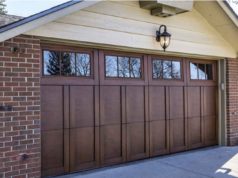Rush Sponsors H.R. 2479, LIFT America Act to Invest in Illinois Infrastructure
WASHINGTON (May 24, 2017) – (RealEstateRama) — U.S. Representative Bobby L. Rush (D-Ill.), who serves as Ranking Member on the Energy Subcommittee of the Energy and Commerce Committee, helped draft infrastructure legislation to bring federal funding to Illinois’ roads,bridges and much more. The Leading Infrastructure for Tomorrow’s America Act, or LIFT America Act, (H.R. 2479) includes key areas within the Committee’s jurisdiction that address broadband, drinking water, healthcare, the electric grid, brownfields and renewable energy infrastructure. The LIFT America Act sets out five years of funding for essential infrastructure improvements in order to promote job growth and enact greater protections for public health and the environment.
“This infrastructure package will put money into the hands of struggling states that need funding for the continuation of road maintenance, to deploy broadband in unserved areas, to promote sustainable infrastructure and to improve financial and environmental management of water systems. The LIFT America Act also will help address the need for more minority contractors and workers to receive opportunities for jobs and contracts across the state of Illinois.”
The LIFT America Act includes investments in several key areas including:
- $40 billion for the deployment of secure and resilient broadband to expand access for communities nationwide while promoting security by design;
- $22.56 billion for drinking water infrastructure to protect public health and create jobs, including increased investment in drinking water State Revolving Funds and additional funding to replace lead service lines, address lead in school drinking water, and prepare for the impacts of climate change;
- Over $17 billion for energy infrastructure, including $4 billion for modern, secure, efficient and resilient electric grid infrastructure, $9 billion for resilient and renewable energy supply including methane pipeline replacement and more than $4 billion for energy efficiency efforts and smart communities;
- More than $3 billion for healthcare infrastructure, to revive the successful Hill-Burton hospital infrastructure program, fund medical facilities in Indian Country, support state labs on the frontlines of fighting Zika and other infectious diseases and expand community based health care facilities;
- $2.7 billion for Brownfields redevelopment to revitalize communities and create jobs by returning valuable land to productive use;
The LIFT America Act will invest in programs with proven records of job creation, including the drinking water State Revolving Fund and the Brownfields Redevelopment program. The legislation requires the use of American-made iron and steel for drinking water projects and hospital construction and requires the payment of prevailing wages. The bill will also spur new high-paying technology jobs by supporting deployment of smart buildings, Smart Grid and Smart Communities technology.
The LIFT America Act also provides much-needed funding to repair and replace aging infrastructure that will have significant public health benefits, especially for children. The bill includes funding to get lead out of school drinking water, replace polychlorinated biphenyl (PCB)-laden lighting fixtures with safer and more energy efficient alternatives in schools and reduce diesel emissions from school buses.
A section-by-section of the bill is available here.
The text of the bill is available here
Source: U.S. Representative Bobby L. Rush






